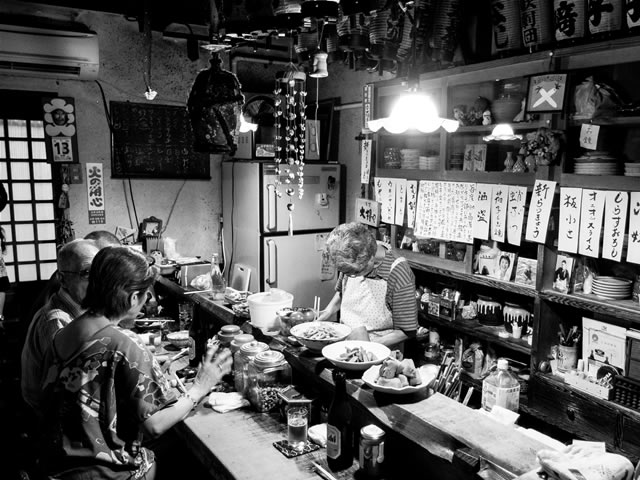
In the little time I’ve known her, there is one thing I’ve found out about Yoko-san: when she says “Let’s go to such and such” you don’t object; you just go. Not because, like most Japanese obachan aunties in their mid-forties to early sixties she doesn’t take “no” for an answer; like most obachan, her persistence is easily cut if you are a man (and especially a foreigner) and express your reluctance in an even marginally stronger way. But because the place she will take you will almost certainly worth your while. Born and raised in Asakusa, retired (but occasionally returning) geisha, dancer, make-up artist, costumier and teacher of various traditional arts with a stage name linking her to one of the countless Kabuki lineages, moves in the heart of the old city equally comfortably on her bike or in her silk crested kimono and sheds lights to holes unknown even to people who have been living in the area for years.
If yesterday I had given in to the stuffy, humid heat and hadn’t followed her, I wouldn’t have found “Daikon-ya” an izakaya too small even for Tokyo’s old neighborhood standards. Dark and narrow with just eight customer seats arranged in front of an one-piece and almost rough wooden bar, its walls filled with memorabilia from the all-female revue troupe Sochiku Kagekidan and Bunraku puppet-theater, oblong chochin paper lanterns that used to be white and starring behind its bar the 75 year-old An-chan, child of the shitamachi (according to her own account) cooking, serving, joking about her imminent funeral, opening beer bottles with an instantaneous strike that made my almost three decades in the martial arts seem inadequate and counting in a way undecipherable even to most Japanese –hei, biki, yama, sasaki…
Daikon-ya will close at some point this August for the first time after forty-six years; the building (where An-chan also lives) needs an overhaul and the small shop will vanish and reappear renewed. Its patrons, ex-members of the Sochiku Kagekidan and other show-business people, elderly neighbors and hip youngsters searching for shops with character (which Tokyo thankfully still has an abundance of) are wondering if the new Daiko-ya will be the same with the old one. To be sure, some things are bound to change but I suspect that as long as An-chan is there with her eggshell-thin beer glasses, her collection of porcelain chopstick stands, the old telephone with the rotary dial and her food mixing sweet and hot and salty and sour, its essence will remain just the same.
Grigoris A. Miliaresis is a journalist and translator. He has worked for many newspapers, magazines and publishing houses and specializes in the Internet, the martial arts and Japan where he has been living for the last few years.